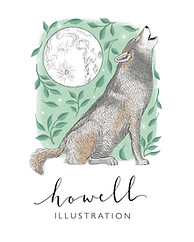Map of the Month: The Ranulph Fiennes Maps
- Nicola Hawley

- Apr 26, 2024
- 4 min read
Creating maps for Ranulph Fiennes
Back in 2022, I created a series of maps for Ranulph Fiennes' book Climb Your Mountain. Here, I chat about the story behind the maps and how they were created.
Contents:
In 2022 I was tasked with creating four maps for the new Quercus title Climb Your Mountain by Ranulph Fiennes. I jumped on the chance to make these. As my purview normally rested with historical and fantasy novels, creating real world maps seemed like a brilliant way to expand my understanding of the creative process. And I was right. I loved making these, and they were simultaneously some of the trickiest maps I've ever created, and some of the easiest. Let me explain . . .

FIRST STAGES: CREATING THE ROUGH MAPS
What made these maps very easy to draw, was the fact that Fiennes already had copies of them. They were scanned and sent over, all I had to do was copy them in my style, updating things as I went (after checking on the copyright, of course).
The map I decided to start with was this one, of the South Pole, documenting Fiennes' epic trip across the Antarctic Circle.
Here, you can see the stages I went through, from the roughs to final product. Typically, I send these to the publishers. The first stage checks I have all the information correct, the second stage marks in further design details (such as how the sea will look), and checks I'm heading in the right direction with design. The third iteration was to double check that the colour palette and style was okay, and the fourth was the final product . . . well. That's what I thought.
CURVE BALL NO.1: CHANGING THE COLOUR PALETTE
Here's where it got tricky. After getting the okay to complete the rest of the maps, and then going ahead and doing just that (see below): the designer changed the colour palette!
As an artist, I'm used to working to briefs that change, but this one definitely threw me for a loop simply because I loved the colour palette I'd used and I loved what I created and couldn't imagine them any other way. It was also decided that the maps were too whimsical, and needed to be brought down to a more serious level.
Man oh man, when I tell you I was super sad to ditch the original ones . . . I positively had conniptions. Still, at least I get to show them here!
I set to work again.
I knocked back the waves, making them less obvious, picked three colours from the new colour palette and worked them into the map of the Antarctic Circle, then made the colours more solid, and less like they had been created by hand. Here's what that looked like once I was finished:

After getting the OK for this version of the map, I completed the others. Thinking I was done, I sent the files off and congratulated myself on adapting them, even though I made all the adaptions whilst weeping under my desk for the loss of the old ones I'd created . . . kidding.
CURVE BALL NO.2: Changing the map format
And then came curve ball number two: after designing each map to go on one page, the designer decided they wanted the Antarctic Circle map to go across two pages.
Now, this can get tricky, because when you're designing a map for a book, you have to take the gutter into account. The gutter is the bit of the book that disappears into the binding. Usually, I plan for this from the start. But now? Take a look at the map above. Where is all the important information? Yeah. Right in the middle, where the gutter was going to be placed.
A SMALL PAUSE FOR AN ANECDOTE
Once, when I was asked to create an essay at uni that featured an entirely fictional artist (that we were to make up), I was complaining to my mum about how difficult it was to create a serious essay around something that was entirely made up, when my mum said: 'I thought you liked creative writing?'.
I did. And she was right. This was my chance to go really off the wall - I had been looking at the situation all wrong. Since that point I've prided myself on my adaptability: on finding solutions to problems.
BACK TO THE MAIN STORY
'I am nothing if not adaptable' I thought. Time to find solutions. And here was mine:

I took the key and compass outside of the map itself, made them a little bigger, and thereby knocked the most important information off the centre line (illustrated above). After fiddling with the text for the 'Transantarctic Mountains' and 'Ross Sea', leaving a gap of a couple of mm within the words, I felt fairly certain that it would sit in the book, if not perfectly, then definitely in a passable way.
The eagle eyed amongst you may also notice that I added in a texture to the sea. I couldn't help myself!
With the maps finally approved, off they went, to their new forever home in Climb Your Mountain.
Although this was one of those jobs that seemed never ending at the time (after thinking I'd finished three times!), I absolutely adored creating these maps - I always do when every map is different! Though, my favourite version, still firmly sits with the first maps I created. What about you? Do you prefer the first set of maps, or the final? Let me know below!
If you liked hearing the story behind these maps, you can check out my other Map of the Month posts, by clicking on the links below:
As always, thanks for reading!
Nx




















Comments